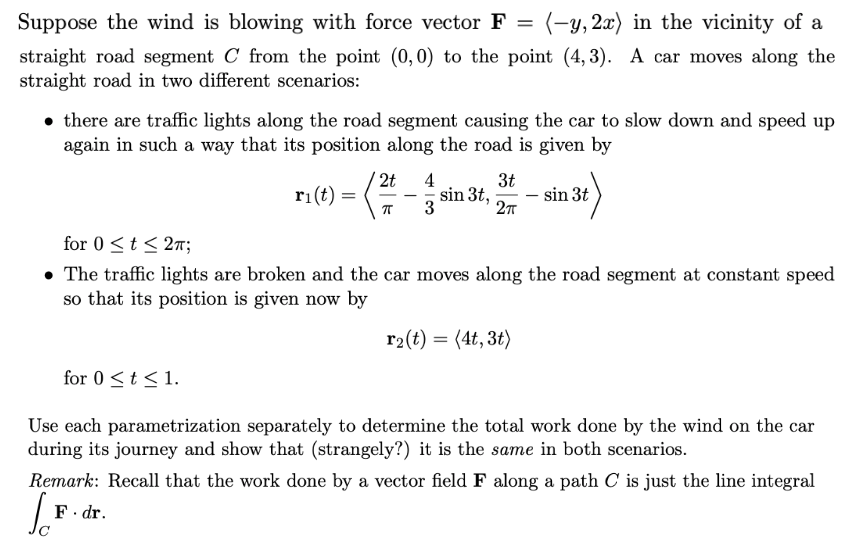Suppose the wind is blowing with force vector F = (-y, 2x) in the vicinity of a straight road segment C from the point (0,0) to the point (4,3). A car moves along the straight road in two different scenarios: • there are traffic lights along the road segment causing the car to slow down and speed up again in such a way that its position along the road is given by r₁(t) = 2t 4 π sin 3t, 3t 2π sin 3t for 0 ≤ t ≤ 2π; • The traffic lights are broken and the car moves along the road segment at constant speed so that its position is given now by r₂(t) = (4t, 3t)
Gravitational force
In nature, every object is attracted by every other object. This phenomenon is called gravity. The force associated with gravity is called gravitational force. The gravitational force is the weakest force that exists in nature. The gravitational force is always attractive.
Acceleration Due to Gravity
In fundamental physics, gravity or gravitational force is the universal attractive force acting between all the matters that exist or exhibit. It is the weakest known force. Therefore no internal changes in an object occurs due to this force. On the other hand, it has control over the trajectories of bodies in the solar system and in the universe due to its vast scope and universal action. The free fall of objects on Earth and the motions of celestial bodies, according to Newton, are both determined by the same force. It was Newton who put forward that the moon is held by a strong attractive force exerted by the Earth which makes it revolve in a straight line. He was sure that this force is similar to the downward force which Earth exerts on all the objects on it.

Step by step
Solved in 4 steps with 4 images






